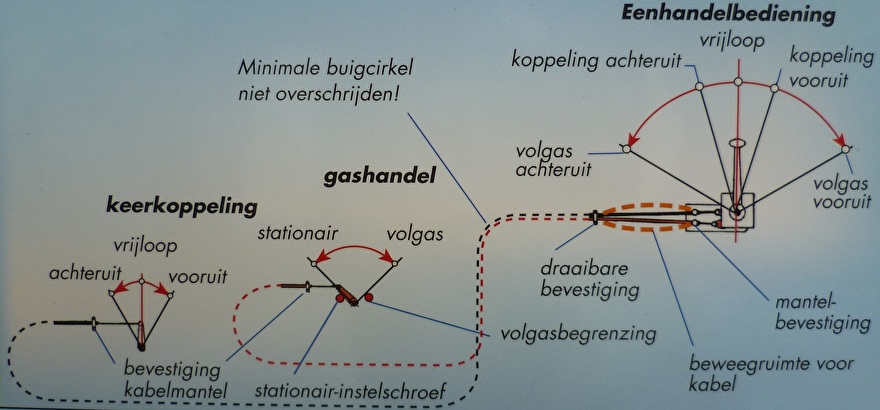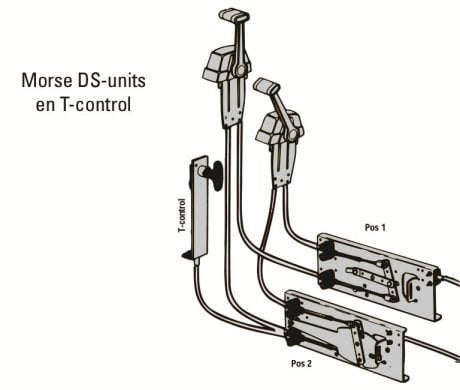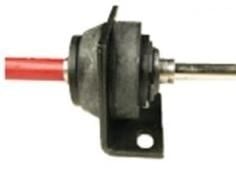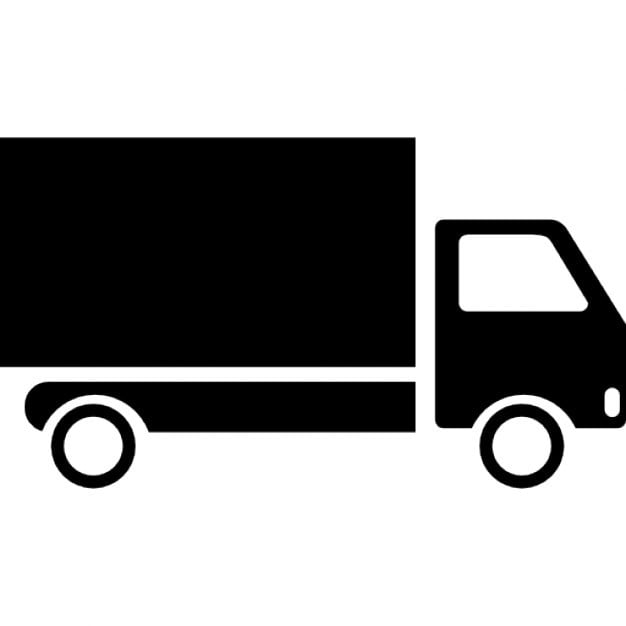This page has been translated with google translate, there may be errors in the stories.
Most ships are equipped with a one-hand control handle to operate the engine and gearbox. This means that with a throttle at the steering wheel you can put the clutch in forward or reverse and accelerate at the same time. On smaller boats, this system is usually fitted with pull and push cables which, if properly adjusted, require virtually no maintenance. These pull and push cables have a steel wire inner cable that is sheathed by a flexible outer sheath that is clamped at both ends, so that when the inner cable is pressed into the outer sheath on one side, it comes out on the other side. This system can also be operated for the brakes on bicycles, but the pulling and pushing cables for a ship engine are much thicker and the core is solid because of of twisted steel wire.

Schematic of a standard control system with cables.
Control handle (maneuvering position)
By moving one-handed control lever forwards or backwards, the gearbox is first engaged and if the lever is pushed more away from neutral, the engine will only go up in revs. It is comparable to one car, first gear up, then accelerate.

In this photo you can clearly see what a one-handed trade looks like on the inside. The throttle cable is connected directly to the lever but the cable of the gearbox is connected to a horizontal lever. A pin mounted in the throttle grip rests in a recess in the lever when neutral. A small turn of the throttle in the forward or reverse direction is enough to move the lever so that it puts the clutch in forward or reverse. The construction is so that when the clutch is put into operation there is no throttle yet, but when the pin has completed the clutch movement it is clear of the recess and the throttle can be operated without affecting the clutch.

Most morse trades have a button that allows you to push the trade forwards or backwards if you have that impression without the link being put into action.


With a boat with 2 Morse handles, the motor has a unit that combines both Morse handles.
Reversing head gear lever.
The gearbox has a shift arm on which the pull-push cable is mounted and it is important that it is properly mounted, that means that the deflection of the gearbox arm is the same forwards and backwards and that the transmission cable to handle has no slack.

The top photo shows the various parts with which the pull-push cable is attached to the control arm of the gearbox.
You can find these parts in the webshop of this site.
Because control cables are connected to the engine compartment, it is possible that annoying engine noises / vibrations are passed on to the steering position via the cables. To prevent this, there are Morse vibration dampers that dampen vibrations and sounds from the engine compartment.

Maintenance:
The operating system of the engine / reversing head is virtually maintenance-free, keeping the moving parts of the gearshift arm on the clutch and engine clean and greasing is recommended, as is the one-hand operation on the steering position.
Points of attention:
The control cables should not be laid in a tight bend, if this is done the cables will run stiffer and wear out faster.
If a cable breaks, it is always possible to manually operate the motor or clutch to get to the side. Pay attention to the rotating parts.





